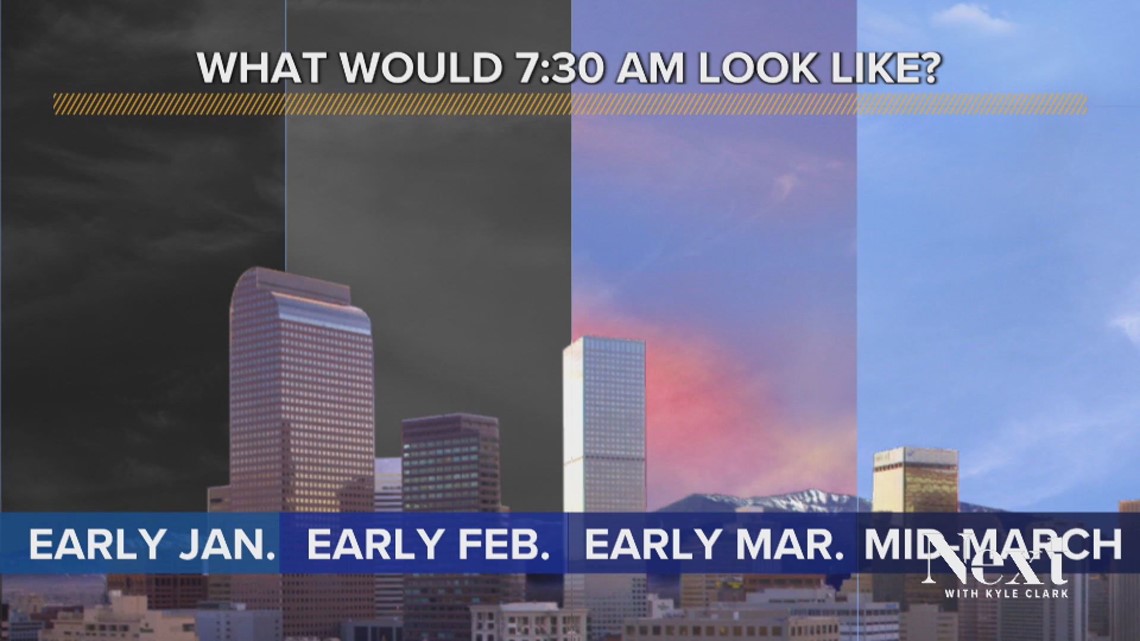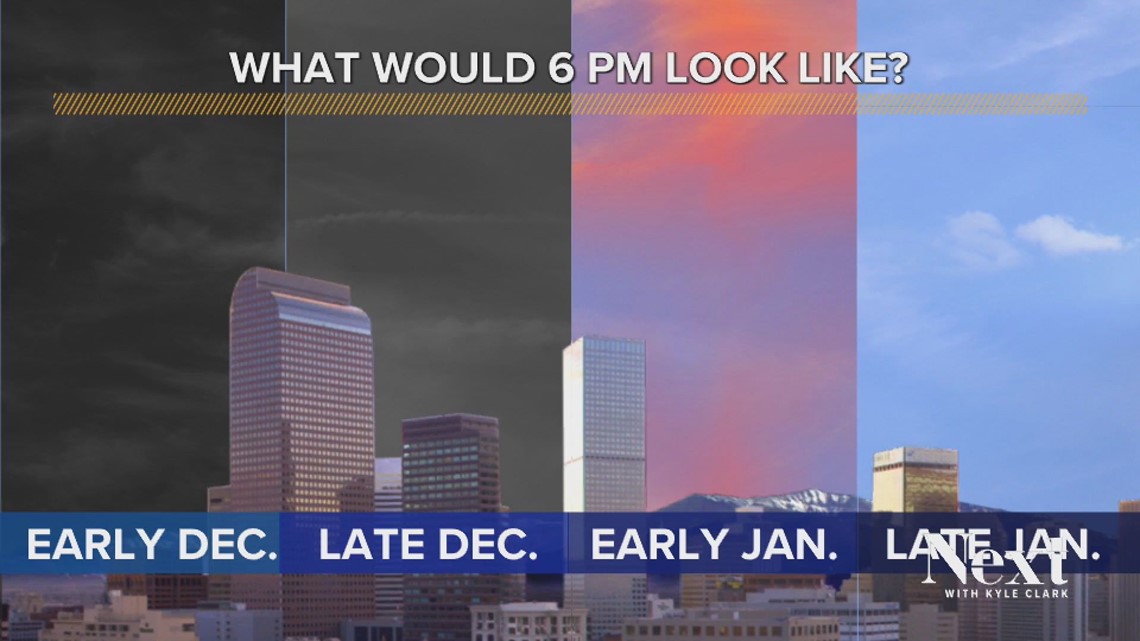DENVER — Two days after most of the country lost an hour of sleep in spring of 2022, the U.S. Senate unanimously passed the Sunshine Protection Act.
If approved by the U.S. House and the White House, daylight saving time would have become permanent starting in November 2023.
What would that look like?
This is good news for people who like to sleep in, and it's less than ideal for people who head out early to work and school. Shifting to a permanent daylight saving time would mean lighter evenings but darker mornings in the winter months.
"There's an obvious pro, which would be that our sunsets are much later in the day. Your drive home from work will be in the light, but your drive into work -- it's going to be weird waking up in the morning," 9NEWS meteorologist Chris Bianchi said.
The sun would not rise in Colorado until after 8 a.m. from late November to early February. The latest sunrise would be around 8:20 a.m.
The earliest sunset of the year would come in early December, at about 5:35 p.m.
The change would look something like this:




Colorado legislation
In March 2022, Colorado lawmakers introduced a bill in the state House that would also make daylight saving time the new standard. Any official change would hinge on federal law.
State Sen. Jeff Bridges (D-Greenwood Village) is a sponsor of the Colorado legislation. Much like the federal bill, he said the proposal coming before Colorado's House is bipartisan.
"Polling shows people agree, they just don't want to change their clocks. Maybe we try both and then we decide, you know what, forget this. We go back to changing our clocks," he said. "Then, 50 years later, people go, you know what, we hate this changing the clock thing. Let's go back to daylight year round. Let's go to standard year round."
Bridges said this topic is good for the spirit of American politics, as it gives people something more enjoyable to debate. He does not believe Coloradans have a preference between making standard time permanent over daylight saving time. He simply thinks people want to stop changing the clocks.
Turn back time
The debate over time goes back centuries.
In the United States, daylight saving time became official in March 1918 with the Standard Time Act.
"It allowed for additional daylight hours to be added into the day to help save energy costs during World War I. The law also established the five time zones that we now know," the Department of Defense website says.
The rule was repealed the following year (excluding the states and cities that opted to keep it on their own), though the time zones stuck.
War, once again, prompted daylight saving time in 1942. Congress passed a law enacting it in an effort to conserve fuel. "War time," as it was known, went away in 1945, though local governments could again make their own decisions. Congress continued to debate the complications that instigated.
In the 1970s, America experimented with a year-round daylight saving time mandated by the Emergency Daylight Saving Time Energy Conservation Act that aimed to cut back on oil usage. Congress confirmed the measure in 1973 and President Richard Nixon approved it. As reported by Washingtonian, the national opinion of daylight saving time soured within months and pre-sunrise crashes increased. A Congressional report states there were particularly more fatalities among school-age children, but there was debate on how much the darkness really contributed to safety concerns.
In Colorado, a teacher in Golden wrote a letter to the editor of the Transcript asking if the clock change was worth the danger. From Jefferson County to Vail, districts adjusted school hours.
In Steamboat, business owners said the time change didn't seem to help their businesses any. Teachers reported teenagers were quieter in the morning, but the elementary school kids were too tired.
The experiment ended in 1974.

